
Beware the perils of waiting too long to repot when your plant outgrows its container. For the last year or so, I would look at this gasteria Batesiana and think, I really need to repot that, and then do something else instead. This year I decided the time had come. Turns out the time had almost past-I like to have never gotten that plant out of the pot! When I finally did manage to get the plant to let go of the pot, all the dirt was gone, and I held in my hand a ball of roots. Alas, once again, I didn’t think fast enough to take a picture of it before replanting it, so you will just have to take my word for it. The roots had even made marks on the side of the little pot, they were so crowded for space. 
I don’t have a before picture, but you can see how small the original pot was compared to the size of the gasteria I took out of it. 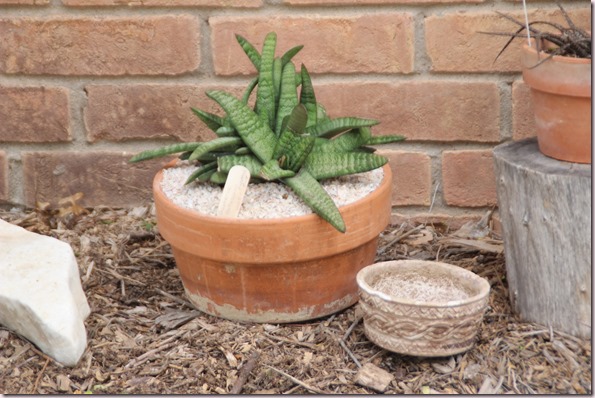
So if you have a plant that overwhelms the pot it is in, take pity on the poor thing and take the time to give it a new home. The ID tag on this one said 2005! It was way overdue a new place to live. 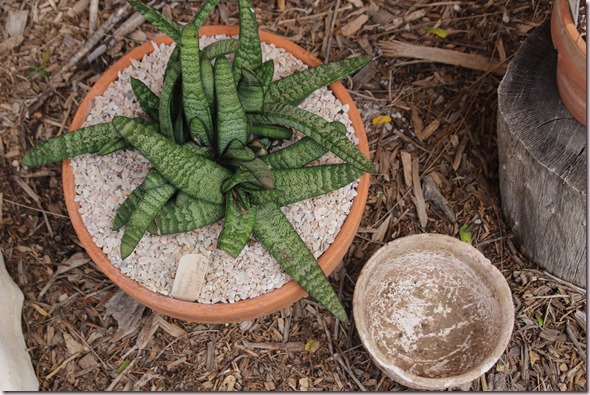
It looks happier already.
Archive | May 2015
Redesigning Wasted Space in the Garden
A spot in the cactus garden was going to waste. Years of falling leaves, dust settling from the road, and time in general had made what used to be a raised bed lined with rocks pretty sad and in need of an update. I wanted a place to put pots of succulents, so rather than breaking out a new spot and adding yet more area to an already large garden, I resolved to rebuild this space. 
As usual, I got in too big a hurry and forgot to take a before picture before I had started removing rocks. But, really, it looked about the same, just mulch covering rocks, no design or plants. And as I moved the original ring of rocks, it was amazing how many I rediscovered under the years of debris! I wound up with more rocks than I needed for the update. But, really, you can never have too many rocks to work with. 
It didn’t take long before Mari dug herself a bed where I had moved the first batch of rocks. Naturally, she assumed I was moving those hard rocks for her benefit. 
So for a while I let her stay comfortable as I made my way around the area and unearthed all the hidden rocks. 
Then it was time to start moving in dirt, sand mostly, from a big pile Bill had out in the pasture. I think it took five, maybe six loads to fill in and raise the bed as much as I wanted to.
After a whole afternoon and part of the next day of arranging and rearranging the rocks, I was satisfied with how I had them fitting one against the other. That’s why I like to have more rocks than I will actually use. Inventory helps when looking for just the right size and shape to fit them all together. Notice all the extras laying around that didn’t get used. Well, didn’t get used here. I can always use them somewhere else that needs updating. 
This is what it looked like after I was satisfied with the design and had the dirt like I wanted it. 
I moved in all the pots.
The final touch was dressing the outside area with new mulch. It looks much better than the sad, forgotten little space it was when I started. The succulents seem happy. This was a much better solution than building a whole new bed, and it updated the whole cactus garden. Now it is just a waiting game to watch them grow and fill their pots.
I fear it will be like the watched pot that never boils. I check them every day, impatient that they don’t seem any bigger than yesterday! But by the end of the summer, they will have filled out and be beautiful and full, plus I will have some rosettes to trim off and root, making new plants.
What fun.
Another Reason I Like Cactus
As I mentioned on Facebook the other day, the cactus blooming season is upon us. All of the pictures I am about to share with you were taken on the same day, April 29th. I found one lovely surprise after another as I walked through my outdoor cactus garden. And the rainbow cactus, the echinocereus rigidissimus, which are probably the ones I have the most of, and whose blooms come in myriad forms but always have outstanding pink flowers, haven’t even hit their stride yet. It‘s a treasure hunt, discovering one prize after another. Look at what I found during just one day.
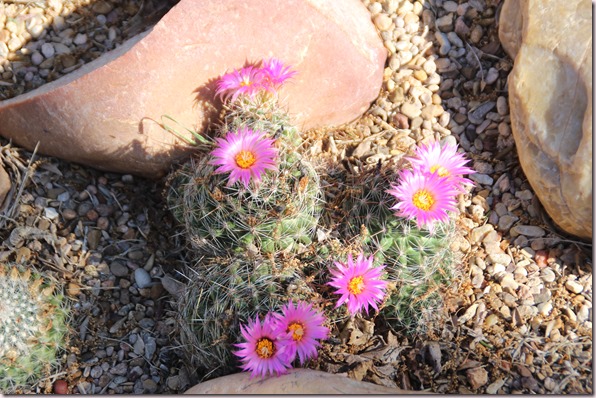
Cactus from Wyoming. Most of the Wyoming cactus bloomed earlier, but several surprised me with flowers now.
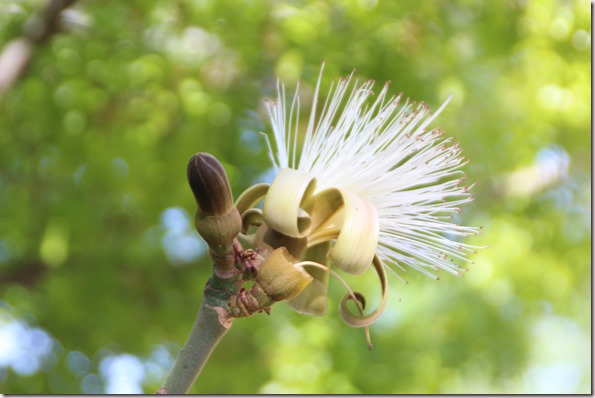
The bombax tree, which actually had at one time six flowers blooming at once. Large leaves will follow.

The blue bonnets always look pretty with the first echinocereus ridigissimus, rainbow cactus, adding pink to the mix.

Those echinocereus rainbows up close.

This hardy delosperma is one of the first plants to begin blooming.

This smaller hedgehog claret cup came from the area around Lake LBJ at Kingsland and has doubled in size since I brought it home. And by the way, it bothers me not one bit to rescue wild cactus which are destined to be bulldozed in the name of progress for some ticky-tacky residential development. And I have owner permission to dig them up. 
I hope you can see the unbelievable number of buds on this small-pad prickly pear which I have yet to identify and alas, can’t remember where it came from. In a few days it will be a mass of yellow flowers and have honey bees working feverishly to collect pollen and nectar from them.
The cholla is heavy with buds, but the red hedgehogs, echinocereus triglochidiatus, steal the show here. Chollas are in the opunita family, which means they are related to prickly pear, even though at first glance they look nothing alike. 
And speaking of prickly pear, this one bloomed also. 
This big hedgehog came from the Fort Stockton area and is a much bigger plant that the others, which were given to me by someone who didn’t want them. I am not sure where they came from, but they are pretty, too. But I marvel at the size of the stems on the Fort Stockton plants. 
This horse crippler, echinocactus texensis, came from the JD Cage ranch east of Muleshoe and is huge for this kind of cactus. The picture doesn’t really show just how large it is; it measures 9 inches across. The little wild daisies came home with it when I dug it up, and I like the way they look dotted around the cactus. I have several different varieties of horse cripplers, each one with different variations in their spines and flowers. 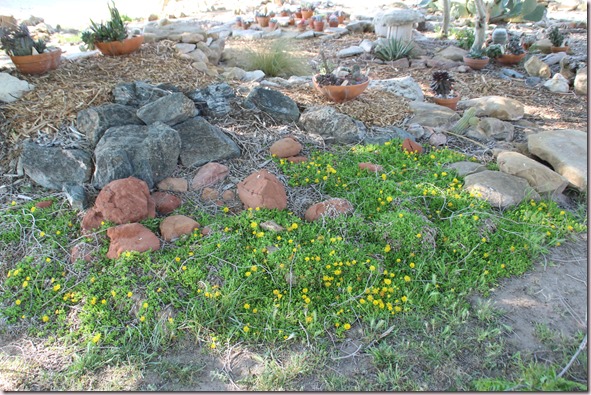
This hardy delosperma turns reddish-purple during the cold months, then greens up and blooms yellow when it warms up. Unlike other delospermas, which are what we usually call ice plants, this one blooms in spring and then is done blooming for the rest of the year.
And I could go on and on, but you get the idea. Cactus are such forgiving plants as far as their growing conditions are concerned, and then they reward the viewer with beauty like this.
I think I’ll go see what is blooming today.